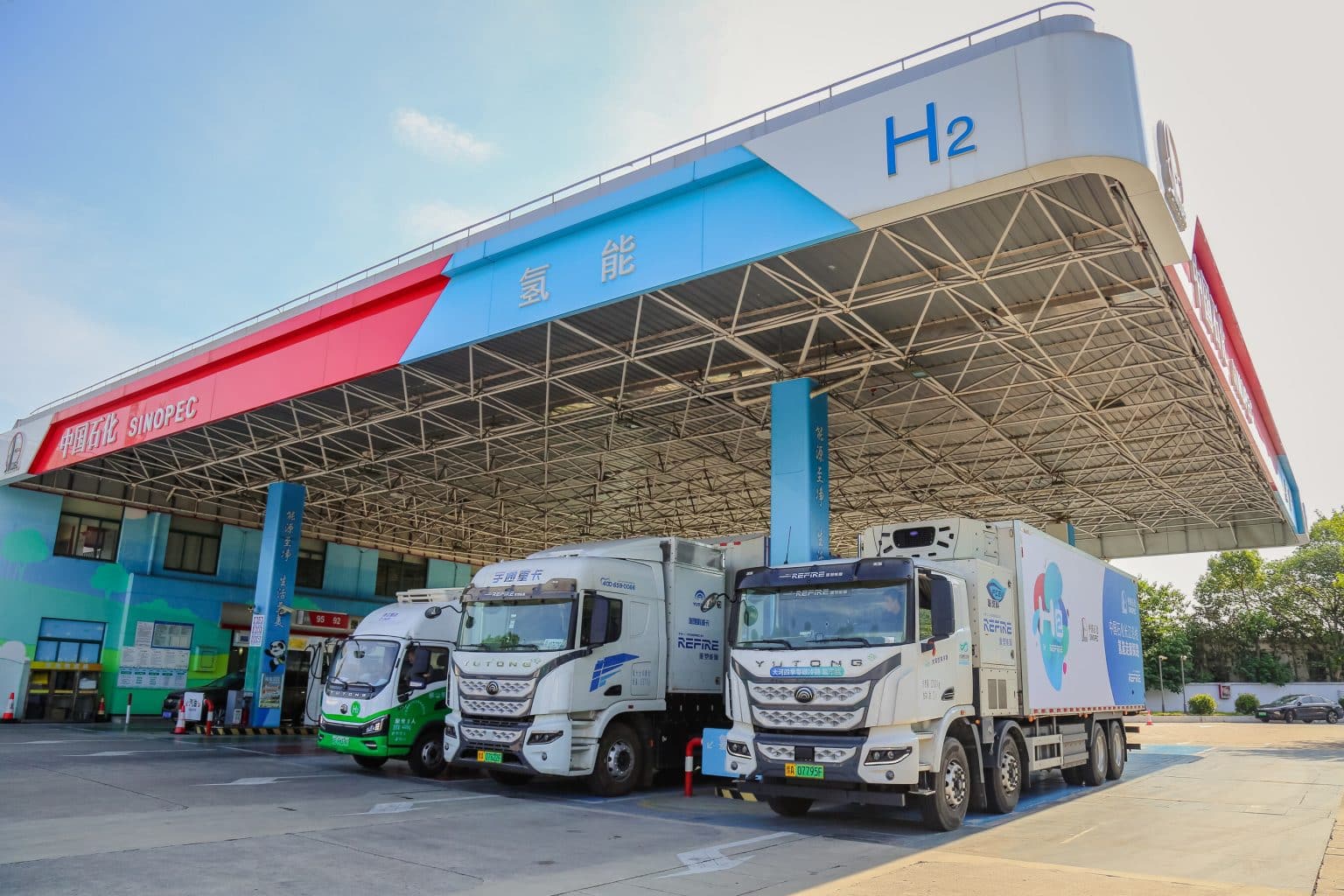China and South Korea are intensifying their hydrogen agendas, but their approaches highlight different priorities—mobility infrastructure versus stationary power generation.
Sinopec’s latest cross-provincial hydrogen logistics test and Ulsan’s inauguration of a new hydrogen power unit reflect how Asia’s two largest energy players are positioning themselves within the global hydrogen economy.
Sinopec marked a milestone in hydrogen-powered transport by sending three hydrogen logistics vehicles on a 1,500-kilometer journey along the Yangtze River corridor. The route spanned five provinces and municipalities—Shanghai, Jiangsu, Anhui, Jiangxi, and Hubei—refueling at six Sinopec hydrogen stations along the way.
This demonstration was not a first-of-its-kind, but part of a systematic effort to test intercity hydrogen mobility. Previous pilots covered the Beijing–Shanghai and Western Land-Sea corridors. To date, Sinopec has launched five intercity corridors and is now integrating them into a Yangtze River “hydrogen axis,” linking eastern and western clusters.
The company’s scale gives it an advantage. With 146 hydrogen refueling stations and 11 supply centers, Sinopec is already the world’s largest hydrogen station operator. Its 4.45 million tons of annual hydrogen production capacity—largely gray hydrogen from refining—underpins this expansion, while pilot projects in seawater electrolysis, solid oxide electrolysis cells, and wind-solar hydrogen hubs in Inner Mongolia suggest a gradual diversification toward low-carbon supply.
Ulsan Focuses on Stationary Hydrogen Power
While China invests in mobility, South Korea’s Ulsan is turning hydrogen into electricity at scale. On September 29, the city and Lotte SK Eneroute inaugurated Ulsan Hydrogen Power Unit 2, part of an 80 MW hydrogen fuel cell project. The 20 MW unit will produce 173,000 MWh annually—enough to supply 40,000 households—by using byproduct hydrogen from local petrochemical operations.
Unlike Sinopec’s cross-provincial logistics push, Ulsan’s model capitalizes on existing industrial hydrogen streams, embedding hydrogen into the power grid. The project reflects South Korea’s strategy of integrating hydrogen into stationary energy systems while developing a parallel fuel cell vehicle market.
By relying on byproduct hydrogen, Ulsan secures a cost-stable feedstock, but scalability beyond industrial clusters could be limited without broader deployment of green hydrogen. Lotte SK Eneroute, a joint venture of Lotte Chemical, SK Gas, and Air Liquide Korea, expects to complete the entire 80 MW portfolio by the end of 2026.
Both developments underscore the uneven trajectory of hydrogen deployment across Asia. Sinopec’s corridors hinge on vehicle uptake and long-distance trucking economics, while Ulsan’s power units depend on industrial byproduct hydrogen and grid integration. Each pathway reflects national strengths: China’s expansive infrastructure rollout and South Korea’s industrial hydrogen reuse.
Stay updated on the latest in energy! Follow us on LinkedIn, Facebook, and X for real-time news and insights. Don’t miss out on exclusive interviews and webinars—subscribe to our YouTube channel today! Join our community and be part of the conversation shaping the future of energy.





